1.- The Sixth Mahavidya, the amazing headless Goddess known as Chinnamasta
1.1- The sixth great wisdom to attain knowledge is Chinnamasta
In the tantric pantheon, the sixth Great Wisdom is Chinnamasta, the headless goddess.
This characteristic of carrying her head in one hand suggests her ability to transcend her mind and functions, so that she achieves the reabsorption of mental speech in the void of Consciousness.
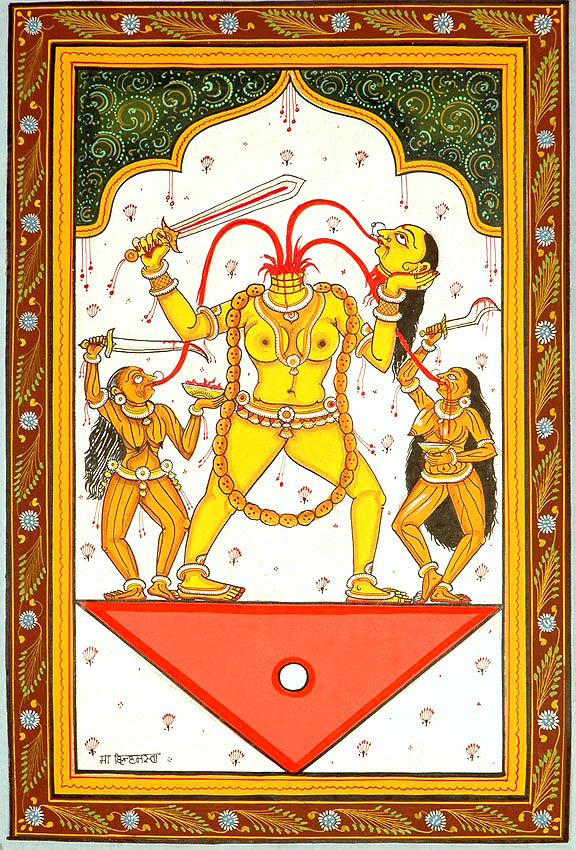
The headless image of Chinnamasta caused many controversies and misunderstandings over time, even among specialists in Hinduism.

The tendency of Western researchers when confronted with the disturbing image of Chinnamasta for the first time, and representations of a headless deity, was to look at macabre aspects, without understanding the profound symbolism of this Goddess.
Therefore, for the researchers, it was difficult to accept the deep spiritual meaning of her, with deep roots and enormous importance in the Hindu and Tantric tradition.
If you want to invoke this Goddess, we recommend that you use an appropriate incense for her veneration in our online store.
2.- The great Mahavidya is the wisdom that transcends the mind
2.1- The experience of a headless entity Chinnamasta
From a psychological point of view, what really causes us fear and rejection at the idea of a headless entity is the idea of death and loss of identity.
The identity (or ego) of the human being is the support element for the Consciousness to manifest. And this consciousness is the basis of the conception of reality.
If this idea about the ego is eliminated, people feel confused, without a point of reference, terrified at the idea of the death of their own identity.
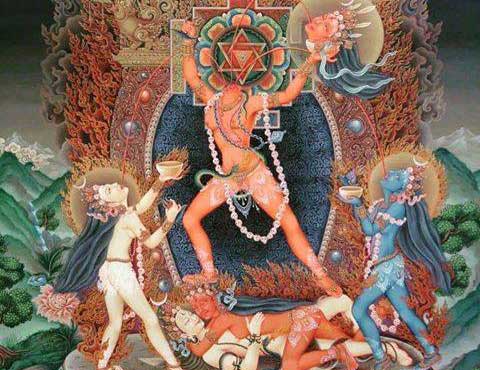
Therefore, we try to protect ourselves consciously and unconsciously, not only against the loss of identity, but also against the idea that this separation with the mind (or with the ego) implies.
Westerners, with a way of thinking based on reason and logic, consider that “losing one’s head” is equivalent to losing contact with reality, but above all, with physical death.
When the wisdom of Chinnamasta becomes part of your own life experience, it becomes a knowledge that becomes part of our interior.
2.2- The yogic tradition and non-duality
We look little at our skull. We perceive it in the same way that we perceive the back of our body. The experience of the interior of the skull is basically the experience of an empty space, because no one is aware of “feeling” the brain or the glands (such as the pineal gland).
In the yogic spiritual tradition, the condition of the headless state actually represents our true inner nature, our Higher Consciousness, separate from the individual Ego.
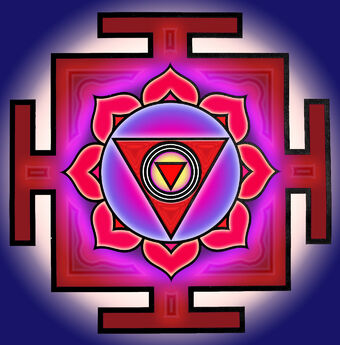
Implicitly, this condition proves that feeling that we are our body is nothing more than a mental and illusory appearance, since we perceive ourselves as separate from our Consciousness.
In fact, the constant thought of “I” and “I am my body”, if it were not sustained by the mind, the Consciousness would gradually return to its original condition: in which it does not depend on any form or thought.
3.- Who dies before dying, only leaves the body on the day of his death
3.1- Which represents the head separated from the body and implicit death
Consequently, the Mahavidya Chinnamasta, whose representation is headless, helps the yogi to dissolve his mind, including all ideas, attachments, habits and preconceptions in his Higher Consciousness. This knowledge helps us to transcend the mind and discursive thought with the state of a mind empty of content. Without thought we proceed to act, without an unnecessary mental discourse accompanying us.
That is why we should not fear the loss of our “head”, or fear the passage of time, because sooner or later death takes us all, regardless of our wishes and beyond our control. We should not be afraid of the “death” of our mind, or the unalterable passage of time.
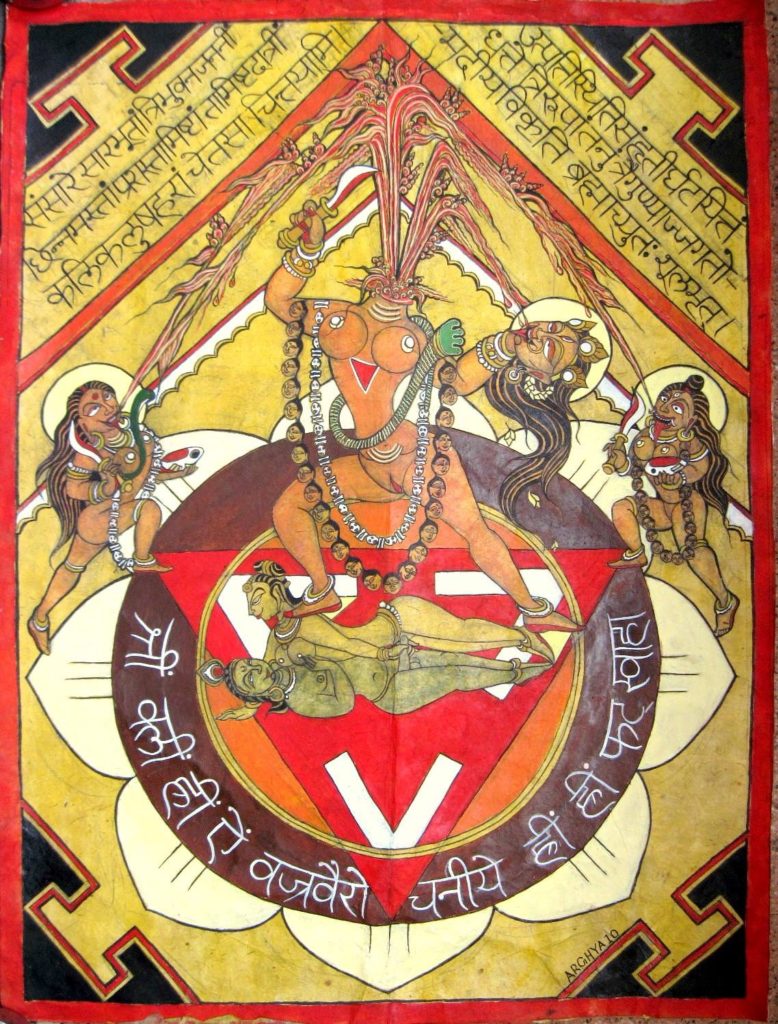
In fact, the only path to spiritual liberation is what we call “sacrifice of the mind.” This implies giving up the complicated mechanism of attachment and possessive thoughts, of which the most persistent is the preconceived idea “I am my body.”
In the spiritual tradition, this sacrifice is symbolized with the severed head, which shows us the separation of the mind from the body: that is, that we can obtain the freedom of Consciousness separated from the physical body.
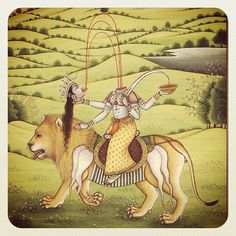
3.2- The impact of the image of the headless Mahavidya, the goddess Chinnamasta
The images have a greater and more dramatic impact on the subconscious, determining faster and more forceful changes in our understanding and in the change of our ideas.
The mind can accept points of view of different theoretical ideas. But the impact of the image cannot be avoided so easily, because the image “communicates” more intensely and directly with our subconscious.
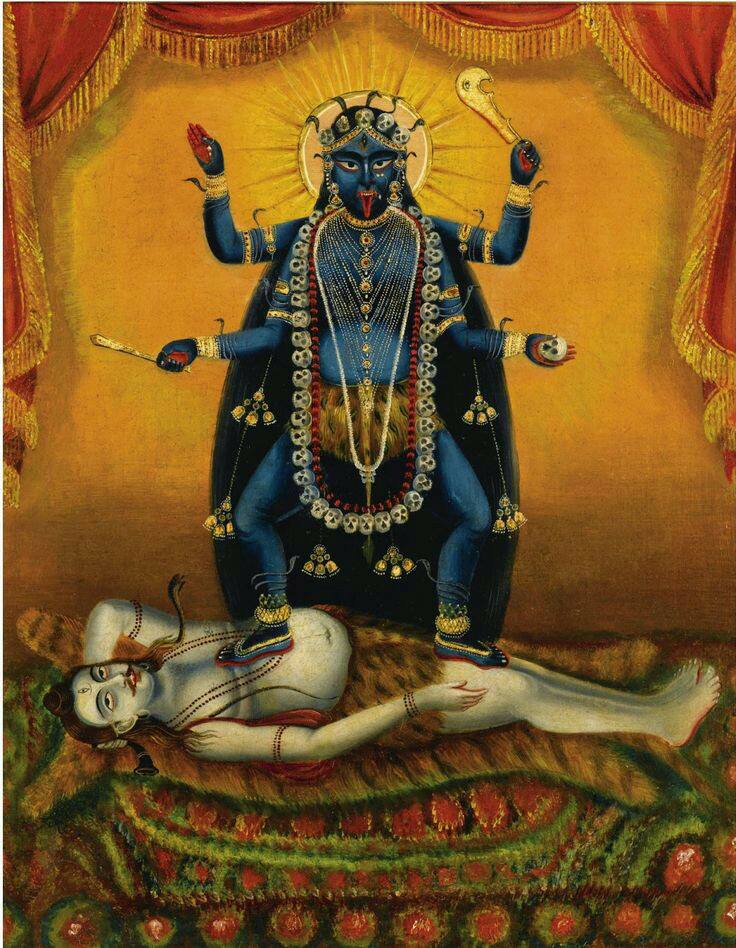
3.3- Sacrifice the ego that represents us
The suffering caused by the sacrifice of the self, or of our individuality, is a complicated experience for many people. We try to avoid it, even if we come to admit its spiritual importance.
The human being experiences only a small fraction of Consciousness, and furthermore this fraction can be distorted through the cognitive limitations that come from our senses.
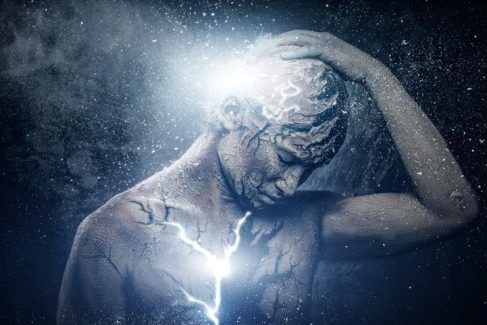
Experiencing even a fraction of our Consciousness causes a complete reorientation of the person who has lived the experience. Inevitably, deep and spiritual needs appear, which in the initiatory tradition we relate to a “second birth“
3.4- The limits imposed on our Consciousness
As a result of this fact, the severed head seems to be even more alive than before. Consciousness is not limited to the dimensions and functions of the body and mind, but can exist simultaneously and separately.
Only when freed from the “prison” of the body, the Consciousness can fully expand, acquiring the freedom and knowledge of our divine aspect.
3.5- The Goddess Chinnamasta allows us to achieve the most absolute happiness
From this point of view, in which the Yogi feels imprisoned in the prison of the senses, patterns, needs and desires, Chinnamasta appears as the knowledge that is capable of saving us from the slavery to which the mind subjects us. .
The image of Chinnamasta evokes the ecstasy and happiness experienced by her Consciousness separated from his mind. His individuality is represented by the blood that his head drinks, since in reality this blood symbolizes all the joys and sufferings, separated from his Consciousness. The two figures at his sides represent the pain and hope of earthly life, which absorb the fragmented experience of time, full of disappointments and illusions.
4.- Correlations and the ultimate meaning of Chinnamasta
4.1- The correlation between the goddesses Chinnamasta and Kali
There is a close correlation between Chinnamasta and Kali, in the sense that Chinnamasta represents, from a certain perspective, the embodiment of Kali’s radical energy of change. Chinnamasta and Kali are oriented towards the spiritual transformation of the Yogi who seeks liberation.
Chinnamasta resonates with the subtle energies of the air at the Vishuddha Chakra, where its abode resides.
Thus we can observe that this Mahavidya acts mainly in an intermediate and fundamental plane in our practice and evolution, since it connects the transcendental aspect of the human being with the material manifestation that surrounds him.
If Goddess Durga is the only one capable of destroying demons and satanic entities, Chinnamasta is the one that destroys the last and most important enemy of the human being: the ego and the discursive mind without control.
To propitiate this Goddess, we recommend you use a suitable incense for the veneration of her in our online store.
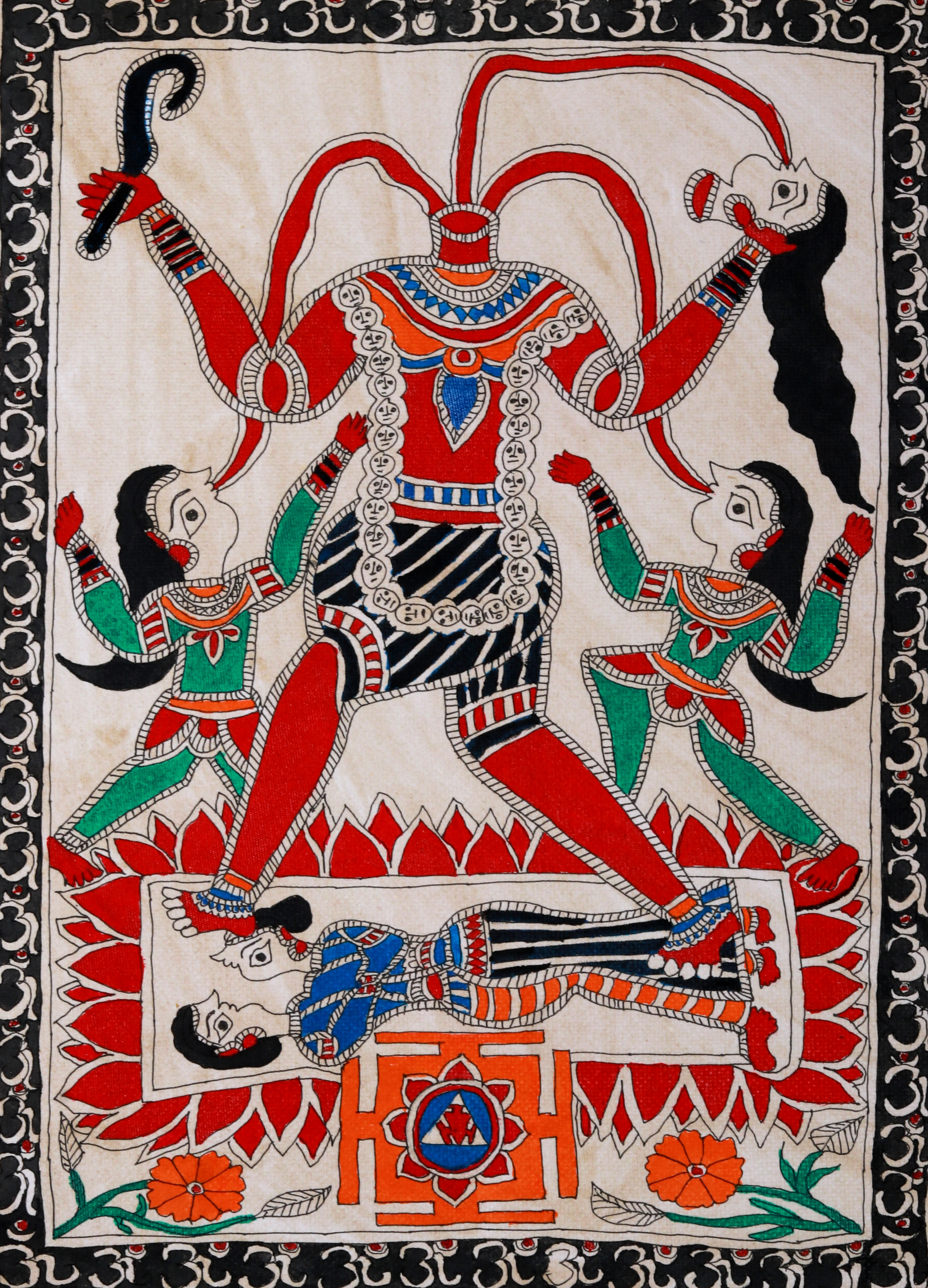
5.- Instant spiritual enlightenment
5.1- Chinnamasta and the transforming power of its wisdom
Like the great god Indra, Chinnamasta represents the light that illuminates our subconscious depths, with a force that acts directly on all corners of our mind.
At this mental level, she acts by facilitating the correct understanding of the essence of the reality that surrounds us, facilitating spiritual enlightenment.

In the physical material world, electrical energy represents one of the forms of this direct transformative power that is Chinnamasta.
5.2- The direct transformation of the Mahavidya Chinnamasta
Chinnamasta represents the force that directs the Yogi quickly towards transformation, directly.
Consequently, Chinnamasta is like the ray of instantaneous spiritual intuition, which forever destroys the veil of ignorance, opening the path to spiritual freedom.
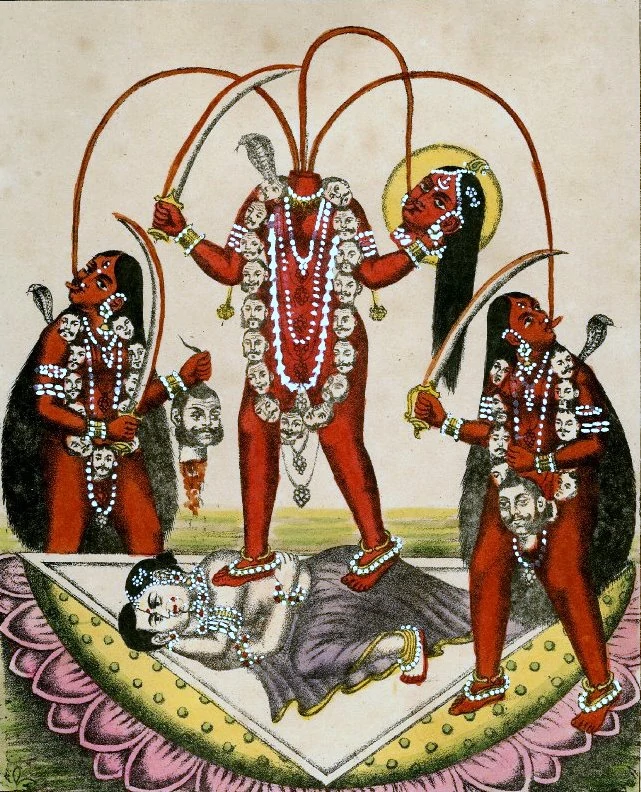
6.- The Goddess Chinnamasta facilitates us to observe the pure reality
6.1- The fire of knowledge that reveals the Consciousness
Chinnamasta gives us the power to have the vision of our pure Consciousness, sacrificing in the fire of knowledge the illusion of belonging to the manifested world, including at the same time our Ego and sense of individuality, which are also sacrificed.
Chinnamasta represents in the Hindu tradition ātma-yajña, which means self-sacrifice. When someone honestly offers his own being, through the act called “the sacrifice of the mind”, he can fully live in unity with his Higher Consciousness, and transcend death.
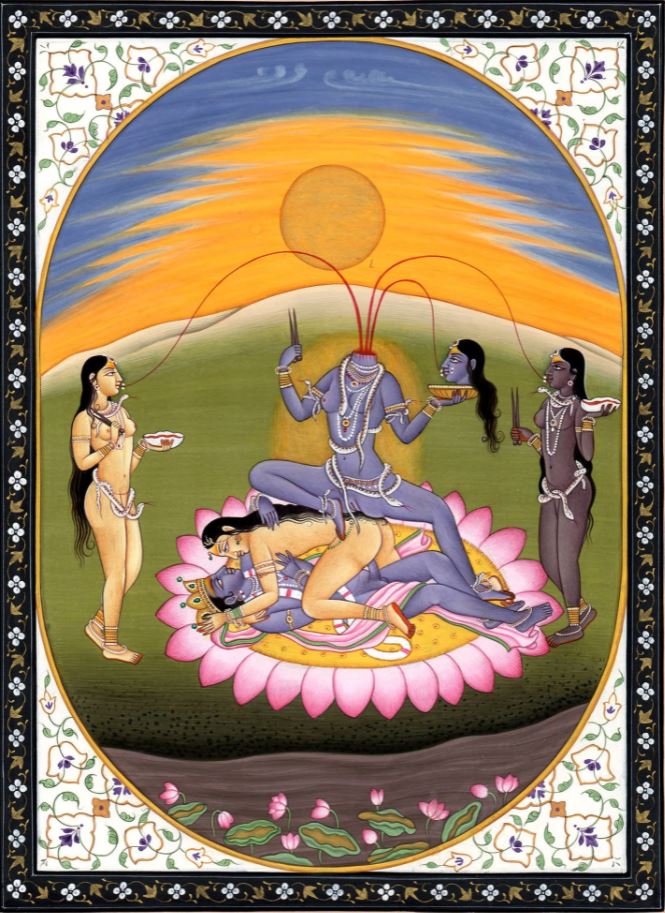
6.2- The yogic tradition and its ability to transform us
In the Hindu yogic tradition it is related that Chinnamasta achieves our transformation through the piercing of our blockages, allowing the yogi to simultaneously transcend mind and body.
This condition is achieved if the yogi obtains the pure vision of reality.
7.- The representation and iconography of the Mahavidya Chinnamasta
7.1- The different Yogas
Chinnamasta is also Yoga Shakti, or the great force of action of yogic power.
In this way, the Wisdom of Chinnamasta acts mainly on the third eye or Ajna Chakra. Opening by his grace the third eye, the light that offers the direct perception of reality without the filters of the mind is revealed to us. Now we can cast off the ignorance inherent in our dual experience.
Because Chinnamasta is associated with the upward flow of energy through the Sushumna Nadi, the Goddess is also correlated with Udana Vayu.
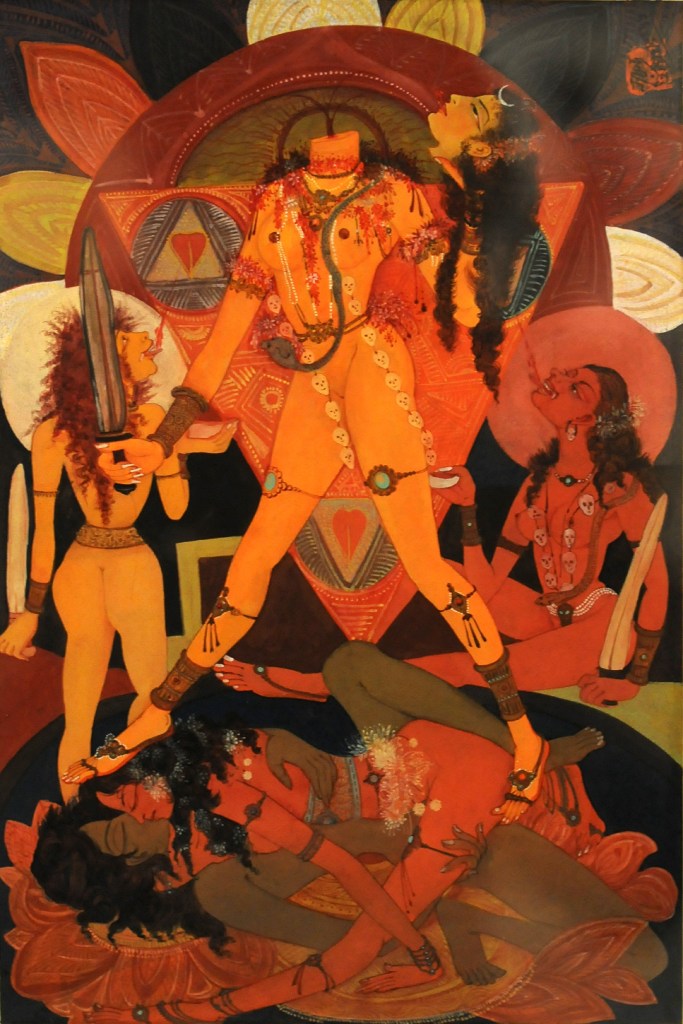
7.2- The representation of the Goddess Chinnamasta
Chinnamasta is usually depicted nude and headless in multiple iconographic representations.
To begin with, she in both of her hands holds her own head and a sword. Her decapitated head drinks from the blood that comes out of her open throat. Traditionally, her head is held in her right hand and her sword in her left.
She wears a necklace made of human bones and a garland of human skulls.
Chinnamasta wears a sacred belt around her hips, and her breasts have a particular shape. The goddess has her three eyes open, radiating a lot of light.
Beside her are two other goddesses, whose names are Dakini and Varini. Chinnamasta dances on the bodies of Kama, the god of desire, and his wife Rati.

7.3- The three currents of blood
In fact, there are three streams of blood coming out of Chinnamasta’s throat.
The first stream is the one she drinks herself. The other two are placed to the left and to the right, which symbolizes the subtle energies of Ida Nadi and Pingala Nadi, and which are drunk by the two yoginis Dakini and Varini.
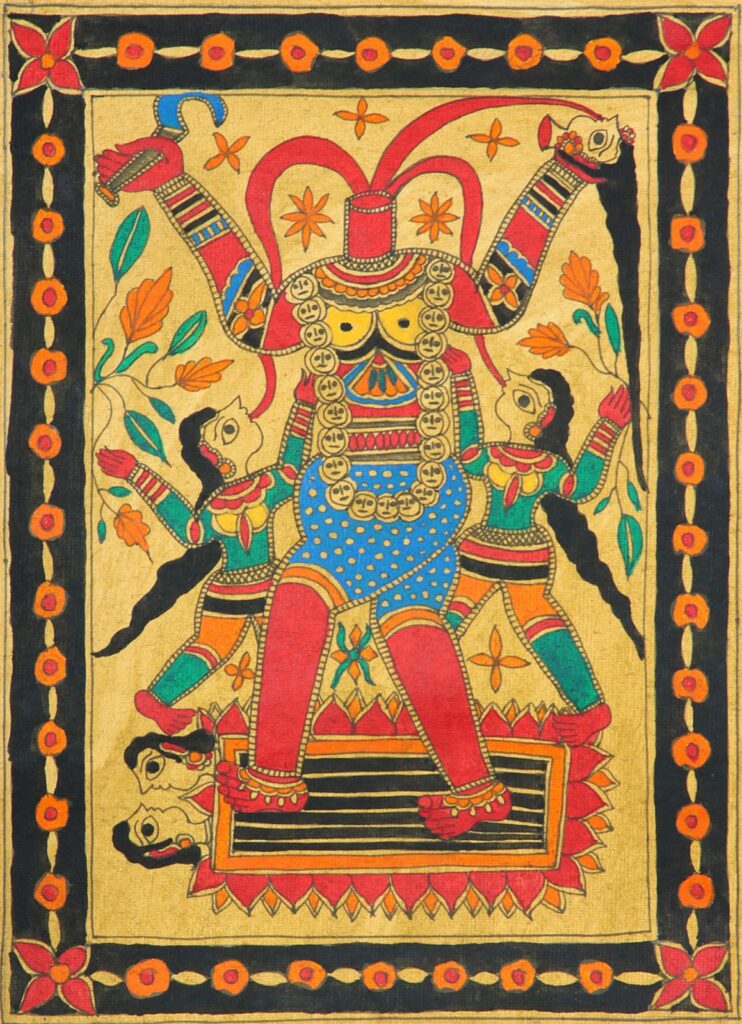
The pair of gods lying at his feet symbolizes the union of masculine and feminine energies in the human psyche.
Chinnamasta’s severed head represents consciousness that has freed itself from the various limitations of the body and mind. While her hair in the form of lightning, and her radiant eyes, are symbols of the direct perception of our Higher Consciousness.
